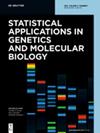Incorporating the empirical null hypothesis into the Benjamini-Hochberg procedure.
IF 0.4
4区 数学
Q4 BIOCHEMISTRY & MOLECULAR BIOLOGY
Statistical Applications in Genetics and Molecular Biology
Pub Date : 2012-07-26
DOI:10.1515/1544-6115.1735
引用次数: 24
Abstract
For the problem of multiple testing, the Benjamini-Hochberg (B-H) procedure has become a very popular method in applications. We show how the B-H procedure can be interpreted as a test based on the spacings corresponding to the p-value distributions. This interpretation leads to the incorporation of the empirical null hypothesis, a term coined by Efron (2004). We develop a mixture modelling approach for the empirical null hypothesis for the B-H procedure and demonstrate some theoretical results regarding both finite-sample as well as asymptotic control of the false discovery rate. The methodology is illustrated with application to two high-throughput datasets as well as to simulated data.
将经验零假设纳入Benjamini-Hochberg程序。
针对多重测试问题,benjamin - hochberg (B-H)法已成为应用中非常流行的一种方法。我们展示了如何将B-H过程解释为基于与p值分布对应的间隔的检验。这种解释导致了经验零假设的结合,这是Efron(2004)创造的一个术语。我们为B-H过程的经验零假设开发了一种混合建模方法,并证明了关于有限样本和错误发现率渐近控制的一些理论结果。通过对两个高通量数据集以及模拟数据的应用说明了该方法。
本文章由计算机程序翻译,如有差异,请以英文原文为准。
求助全文
约1分钟内获得全文
求助全文
来源期刊

Statistical Applications in Genetics and Molecular Biology
BIOCHEMISTRY & MOLECULAR BIOLOGY-MATHEMATICAL & COMPUTATIONAL BIOLOGY
自引率
11.10%
发文量
8
期刊介绍:
Statistical Applications in Genetics and Molecular Biology seeks to publish significant research on the application of statistical ideas to problems arising from computational biology. The focus of the papers should be on the relevant statistical issues but should contain a succinct description of the relevant biological problem being considered. The range of topics is wide and will include topics such as linkage mapping, association studies, gene finding and sequence alignment, protein structure prediction, design and analysis of microarray data, molecular evolution and phylogenetic trees, DNA topology, and data base search strategies. Both original research and review articles will be warmly received.
 求助内容:
求助内容: 应助结果提醒方式:
应助结果提醒方式:


